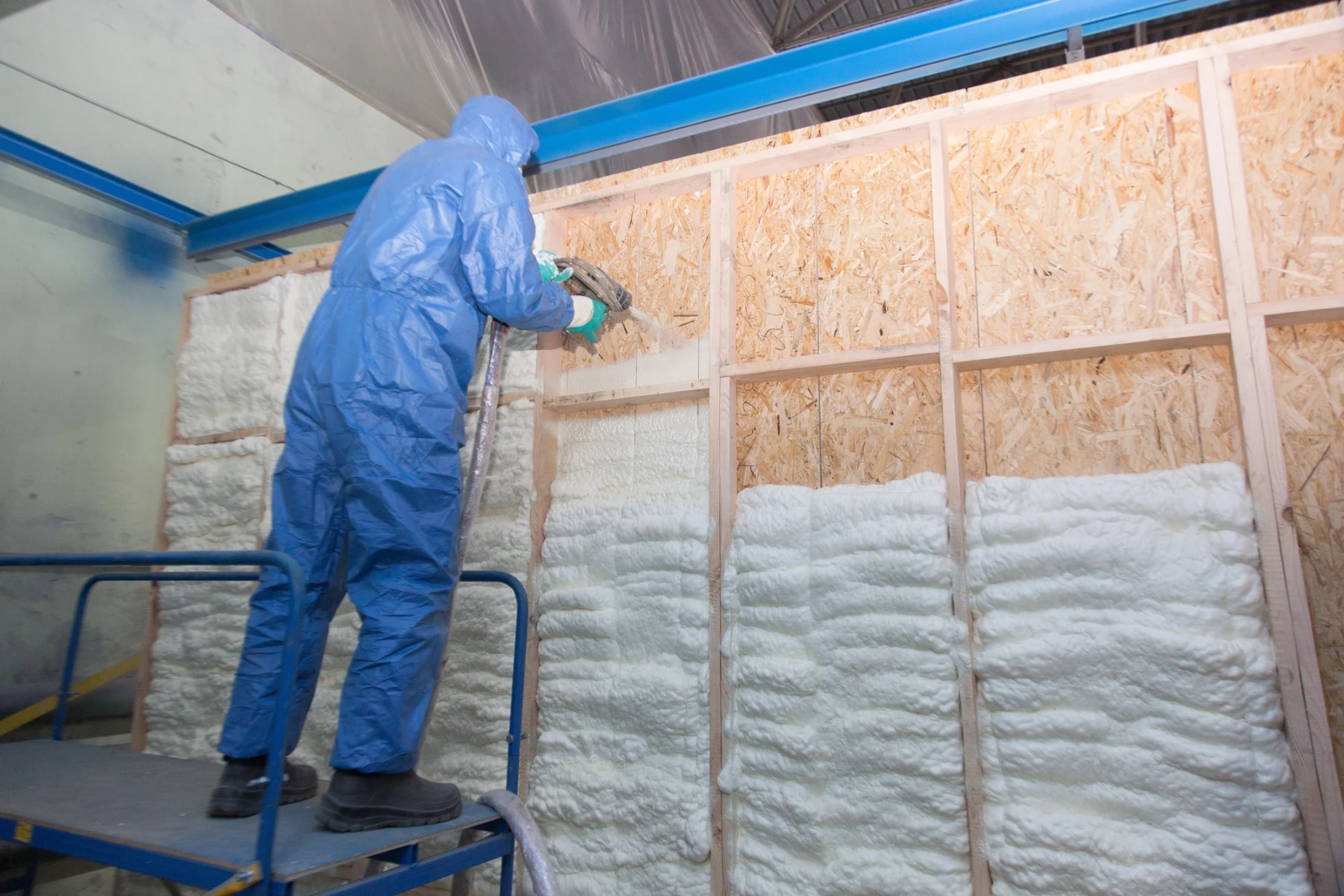
When homeowners consider insulating their properties, spray foam insulation often tops the list due to its effectiveness in energy efficiency, noise reduction, and air sealing. However, an important question frequently arises: Can mold grow behind spray foam insulation? The short answer is yes, mold can potentially develop behind spray foam insulation if the conditions are right. But the underlying reasons are more nuanced and depend on a variety of factors.
This comprehensive guide explores whether mold can grow behind spray foam insulation, the circumstances that contribute to mold growth, and how to prevent these issues. Whether you’re in Spokane, WA, or anywhere else, this article provides valuable insights on how to keep your insulation mold-free and your home healthy.
Spray foam insulation is a popular choice for many reasons. It offers superior insulation performance by expanding to fill gaps and cracks, creating an airtight seal that is ideal for both new builds and retrofits. One of its primary benefits is preventing drafts, which makes it highly efficient in maintaining indoor temperatures.
However, with all its advantages, spray foam insulation isn’t entirely impervious to moisture or mold. Mold requires specific conditions to thrive: moisture, warmth, and a food source (such as organic materials). Even though spray foam itself does not serve as food for mold, the surfaces it adheres to might. If moisture gets trapped behind the foam and the conditions allow for it, mold can grow.
For homeowners and building professionals, understanding the potential risks of mold growth behind spray foam insulation is critical for maintaining healthy living spaces. Mold can not only affect the structural integrity of a building but also lead to health issues, especially for those with respiratory conditions like asthma or allergies. The goal is to identify and prevent conditions that would enable mold to thrive behind the insulation.
Mold thrives in environments with persistent moisture. When spray foam insulation is applied correctly, it prevents air and moisture infiltration, which is one of the reasons why it’s so effective. However, if moisture seeps into the walls or ceiling due to poor installation, roof leaks, or plumbing issues, it can become trapped behind the foam.
If this trapped moisture isn’t addressed, the humidity levels behind the foam can increase, creating an environment conducive to mold growth. Common sources of moisture intrusion include:
A poorly installed spray foam insulation can lead to air gaps or areas where moisture can enter. If the foam doesn’t form a complete seal or there are issues with the substrate, water can get behind the foam and remain trapped. This is why professional installation is key to ensuring that the spray foam insulation is applied correctly and creates a proper seal.
Ventilation plays a critical role in maintaining indoor air quality and moisture control. Even if the insulation itself is high-quality, insufficient ventilation can contribute to moisture buildup, leading to mold. For example, attics or crawlspaces that are improperly ventilated can trap warm, humid air, creating ideal conditions for mold growth, especially if insulation blocks airflow.
Mold requires certain conditions to grow, and the same principles apply to areas behind spray foam insulation. If the space between the foam and the underlying surface (wall, ceiling, etc.) remains damp for an extended period, mold spores can begin to germinate and spread. Here’s how the process typically unfolds:
Preventing mold growth behind spray foam insulation is possible with proper planning, installation, and maintenance. Here are some effective methods for keeping mold at bay:
Hiring a professional with expertise in spray foam insulation installation is the best way to ensure that your home is properly sealed. Improper application or insufficient coverage can leave gaps that allow moisture to enter. Additionally, ensure that the installation adheres to local building codes and standards to minimize the risk of moisture buildup.
Controlling moisture is key to preventing mold growth. Here are several ways to manage moisture levels in your home:
In areas where spray foam insulation is applied, ensure that there is adequate airflow to prevent moisture buildup. For attics and crawlspaces, this might mean installing additional vents or fans to promote air circulation.
Conduct regular inspections of areas where spray foam insulation has been applied. Look for signs of moisture, mold, or mildew in attics, basements, and walls. Catching issues early can prevent more serious problems down the line.
While mold can potentially grow behind spray foam insulation under certain conditions, it is preventable with the right precautions. Ensuring proper installation, controlling moisture, and maintaining good ventilation are key strategies to protect your home from mold growth.
If you’re concerned about the state of your insulation or need professional assistance, Inland Northwest Spray Foam in Spokane, WA, is here to help. They offer high-quality spray foam insulation solutions designed to keep your home safe, dry, and energy-efficient.
Can spray foam insulation cause mold to grow?
Spray foam itself doesn’t cause mold. However, if moisture gets trapped behind the foam due to poor installation or other issues, mold can develop.
How can I tell if there’s mold behind spray foam insulation?
Signs of mold behind spray foam insulation include musty odors, visible mold on surfaces near the insulation, or increased humidity in the area.
Can mold grow behind closed-cell spray foam?
Closed-cell spray foam provides a more effective moisture barrier than open-cell foam, reducing the likelihood of mold growth. However, mold can still grow if moisture gets trapped from other sources.
Is spray foam insulation safe for homes in Spokane, WA?
Yes, spray foam insulation is safe and effective in Spokane, WA, as long as it is installed properly and moisture levels are controlled.
How often should I inspect my spray foam insulation?
It’s recommended to inspect areas with spray foam insulation at least once a year or if you notice any signs of moisture or mold.
Can I install spray foam insulation myself to prevent mold?
While DIY installation is possible, professional installation ensures that the spray foam is applied correctly and prevents moisture-related problems.